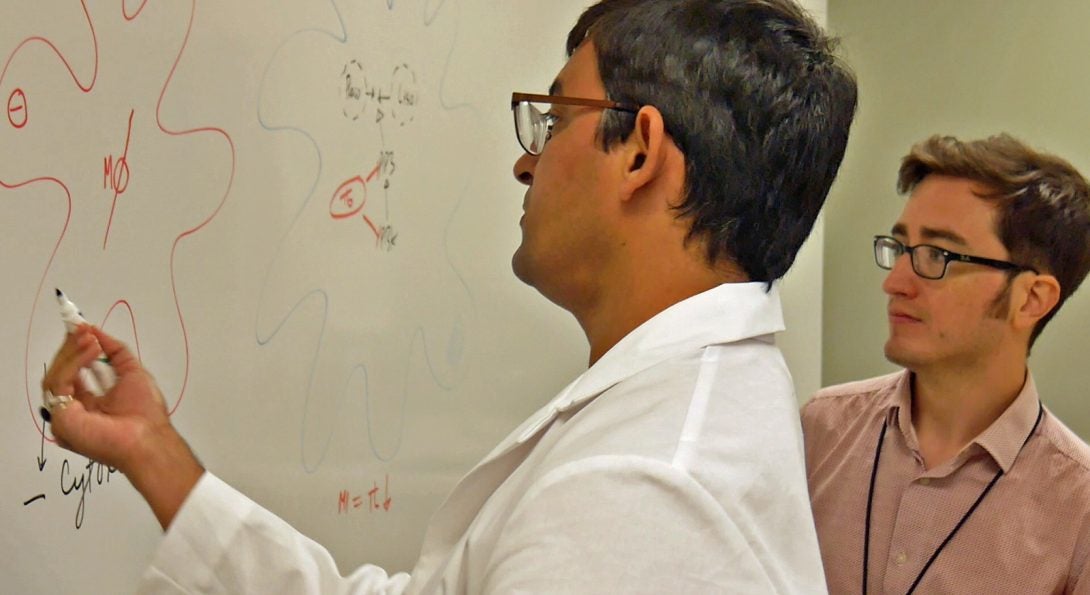NIH Funds Study on Viral microRNAs

Did you know that half of American adults suffer from periodontal (gum) disease? That is why the College is advancing research to prevent it. Principal Investigator Dr. Afsar Naqvi, Research Assistant Professor; Dr. Sal Nares, Head; and Dr. Jezrom Fordham, Research Assistant Professor, Periodontics, recently received a National Institutes of Health R21 grant entitled, “Characterizing the Role of Viral microRNAs in Regulating Macrophage Plasticity.”
“The oral cavity is a niche to diverse microbes, including viruses,” Dr. Naqvi explained. “Herpes viruses are predominant as latent infections among the human population and can reactivate under certain conditions like stress, UV light, hormonal changes. Small regulatory RNAs encoded by herpes viruses—vmiRs—are important in viral persistence and our lab has previously shown that their levels change during inflammation.”
The focus of the study is to investigate “how vmiRs functionally modulate key immune cells that reside in oral mucosa—namely macrophage and their ability to elicit specific immune responses,” Dr. Naqvi continued. “Further, the impact of exosomes—cell secreted nanovesicles—from vmiR expressing macrophages will be assessed on the key functions of neighboring oral keratinocytes.”
The team is interested in how vmiRs alter immune responses triggered by oral keratinocytes upon challenges with periodontal pathogen-derived immunogenic components.
“We expect that vmiRs modulate macrophage immune responses and disturb intercellular communication mediated by secreted cytokines to favor viral tropism, survival, and spread,” Dr. Naqvi explained. “The aspects have not been investigated earlier and will likely provide novel insights on the role of vmiR in pathogenesis of oral diseases.”
The study includes examination of how vmiRs alter immune responses triggered by periodontal pathogens including P. gingivalis and A. Actinomycetemcomians.
“Our long-term plan is also to use vmiRs as potential diagnostic/prognostic markers in oral diseases,” Dr. Naqvi said. “The knowledge gained from these research avenues will be utilized to develop therapeutic targets, which will be of value to medicine and dentistry.”
The team’s first report on the identification of vmiRs in human dental pulp was mentioned on the cover page of the Journal of Endodontics’ January 2017 issue. See goo.gl/AR6UID.
The research also is supported by the Edward C. Wach fund and other funds from the College.